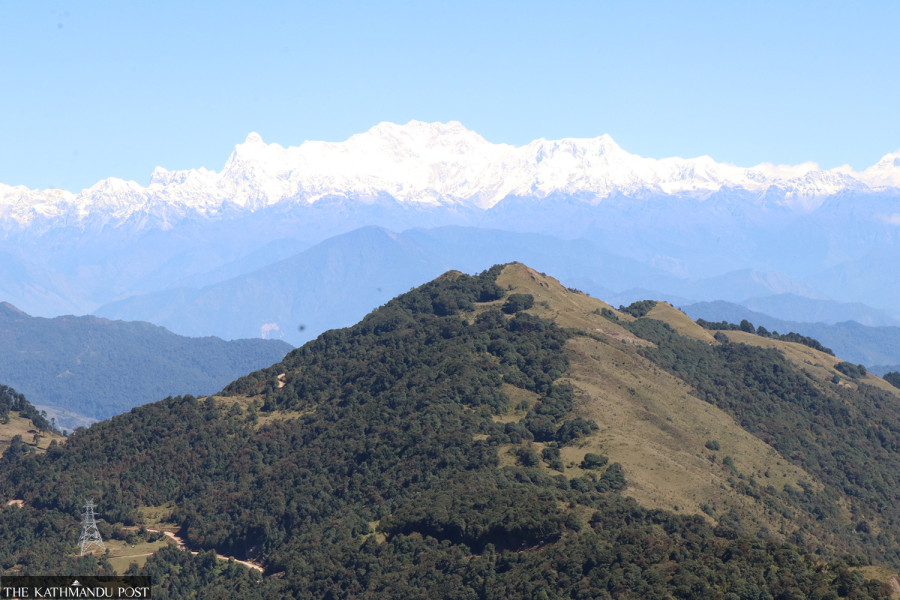Koshi Province
Nepali botanists claim to have discovered two new rhododendron species
The claim comes amid worries that the rhododendron forests are depleting fast due to the climate crisis.
Chandra Karki
Researchers have claimed to have discovered two additional species of rhododendron in the TMJ area, which is often dubbed the ‘rhododendron capital’ of Nepal. TMJ is the initialism for Teenjure, Milke and Jaljale areas that are spread over three districts of Province 1—Tehrathum, Sankhuwasabha and Taplejung. If the claims for two new species are established, the region would be home to 32 different species of rhododendron.
A team of conservationists, including botanist Kamal Maden and Dipak Khadka, who is doing his PhD at South China Agriculture University in China, had carried out a research in the TMJ area for two weeks recently.
Maden said the new species were found in the rhododendron forest spreading from Teenjure to Phaktalung.
“The newly-discovered rhododendron species had not flowered since we visited the area during off-season,” he said. “We have collected the leaves and have taken samples of the stem for laboratory test.”
The TMJ area which lies in the high hills and Himalayas is considered rich in biodiversity.
According to the Royal Botanic Gardens in London, a total of 173 species of rhododendron are found in the world. Of them, 33 are found in Nepal across 43 districts in hill and mountain regions.
A sub-species of rhododendron arboreum, commonly known as Laligurans, is found exclusively in Nepal. The subspecies, according to Maden, is found in the central and eastern hills of Nepal.
Several book-length works have been devoted to study the rhododendron species found in Nepal. “However, proper research has not been conducted about the rhododendron species which are believed to be found in Nepal,” Khadka said. “Some botanists and researchers have been collecting samples of some species.”
Locals and other stakeholders are worried about the depletion of rhododendron forests in the area.
The vast rhododendron forests that spread across 8,874 hectares of land in the TMJ area have been depleting, locals say, mainly due to infrastructure construction, overgrazing, and unchecked use of forest products.
The TMJ area was declared a rhododendron conservation area in 1998.
According to Bharat Babu Shrestha, forest officer at the Division Forest Office in Tehrathum, a warming climate and depletion of water sources are other challenges to rhododendron forest conservation in the TMJ region.
Shrestha said his office has launched various programmes, including mass awareness, to preserve rhododendron forests. “The government, conservation authorities and local people should work together to launch effective conservation programmes and make them successful,” said Shrestha.
The federal government formulated a five-year rhododendron conservation action plan starting from the fiscal year 2017-18 aiming to control the depletion of rhododendron forests across the nation. The plan further aims to identify rhododendron habitats, manage pastures and plant rhododendron saplings in forest areas within five years. It also aims to encourage villagers to use improved cooking stoves and promote alternative energy sources. Stakeholders, however, complain that the plan has not been implemented effectively.




 11.12°C Kathmandu
11.12°C Kathmandu













